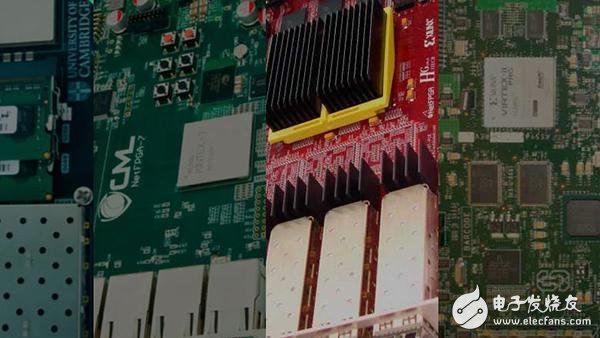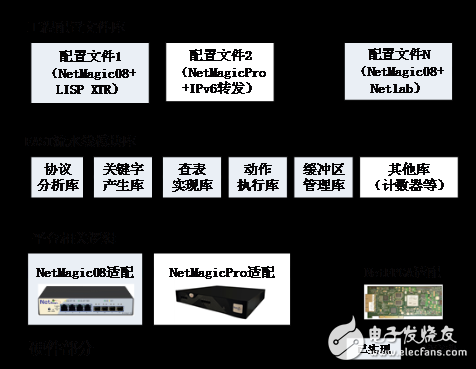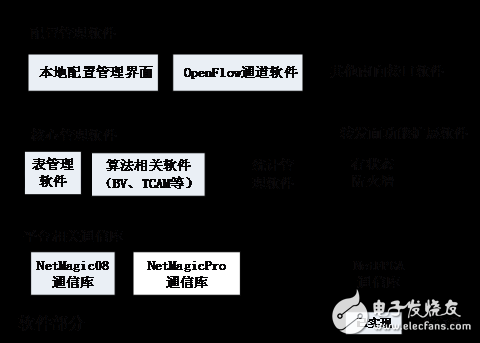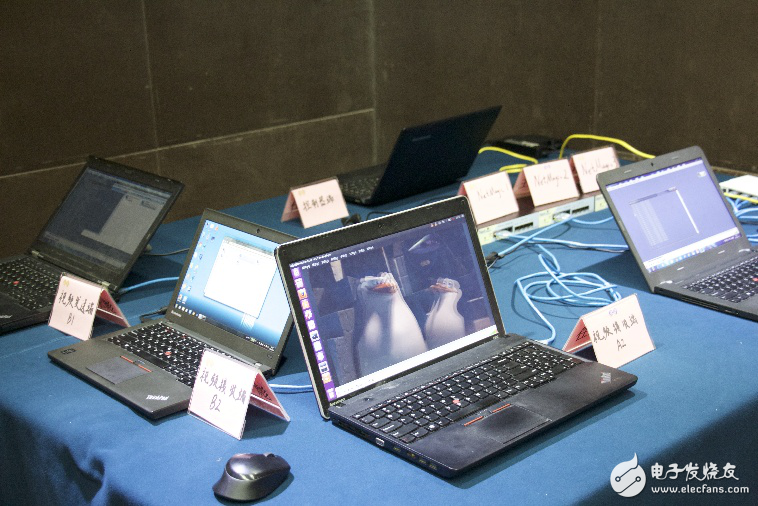Since the introduction of the GNU program by free software movement leader Richard Stallman in 1983, open source has brought creative revolution and commercial success to software development. The rapid development of SDN today is also inseparable from the power of the open source community. Open source projects such as NOX, Floodlight, OpenContrail, and ONOS have greatly promoted the development of the SDN industry chain. However, the open source of SDN is mostly limited to the field of controllers or software switches. The hardware open source project of data plane has never ushered in a spring of blossoming, and at the same time, it has not formed an orderly, standardized and creative in the field of network teaching research. The ecological circle, the birth of FAST may provide a new idea.
The Stone of Other Hills: The Enlightenment of NetFPGA
NetFPGA is an open test platform developed by Stanford University based on Linux. It can support modular design and enable researchers to build Gb-level high-performance network system models on it. When Stanford University first began researching the OpenFlow project, it was a hardware-accelerated wire-speed OpenFlow switch based on NetFPGA.

Since 2009, the NetFPGA team has released code and design documents on GitHub, creating separate wiki pages and software and hardware development guides for the four specifications of the NetFPGA platform. We have noticed that open source brings a lot of "dividends" to NetFPGA:
(1) Accelerate the version iteration of the project. Since open source can effectively share resources, unnecessary duplication of work can be avoided. Taking NetFPGA 1G as an example, eight versions are updated in 18 months, which greatly saves cost and time.
(2) Make project design and development more standardized and reliable. The design document of NetFPGA is for public review on the basis of openness and equality. More than 200 design documents have contributed more than 90 people, which is enough to show that the design of hardware units can be ordered and based on mutual reference and comparison. specification.
(3) Encourage research on innovative projects. Due to the open source, more and more researchers have begun to pay attention to NetFPGA, and participated in the establishment of many NetFPGA-based projects, such as open source network tester (OSNT), OpenFlow switches, etc., can provide useful trials for next-generation networks.
However, due to the limitations of the NetFPGA hardware platform and the lack of attention to the SDN switch, we decided to establish a FAST open source project on GitHub, focusing on the design and reconstruction of the SDN hardware switch, providing real for the research of the SDN data plane. The experimental environment and cases have contributed to the development of network research and teaching in colleges and universities.
FAST's past and present
FAST's basic hardware application platform is NetMagic [1], which is independently developed in China. It is different from the way in which the board and the host are tightly coupled with NetFPGA. NetMagic uses a separate control plane and forwarding plane. Users use their own computers to remotely manage through the network. Configure NetMagic hardware for greater portability and scalability.

FAST (FPGA bAsed SDN swiThing) is an FPGA-based reconfigurable switching architecture proposed by the students of the National University of Defense Technology. The message processing process is disassembled into multiple independent packet processing stages, and each stage is established. The corresponding module library, developers can freely choose functional modules to quickly reconstruct the message processing pipeline. This "offline reconstruction" approach can meet diverse network needs, greatly reducing the difficulty of network application service development and the development cycle of network equipment.
How to enhance the flexibility and scalability of the forwarding plane, the key lies in the free choice of modules in the function library, and the expansion of the module library according to the standard is the significance of establishing an open source community. In the open source process of FAST, not only the open code and design documents, but also the existing work can be integrated and reused, and can also provide technical support for open source data plane design. In a nutshell, FAST actually represents a A standardized development mode for FPGA switches.
Hardware: Reconfigurable to the end The hardware part of the source code needs to be programmed to the FPGA to implement the message forwarding function, mainly consists of the following three parts:
The first part is the code of the FAST pipeline module library, which is the key to realize different message processing logic. It does not involve any specific circuit components. It is a universal and programmable function module. The module uses the standard interface recommended by FAST and other modules. Connected. The user can re-select or improve the content of the pipeline module according to the change of the application environment, compile different cases to meet the requirements of the programmable network.
The second part is the logic code related to the development platform. For example, in the processing of data path and control information, NetMagic08 uses the Ethernet port to pass control commands through the NMAC protocol, while NetMagicPro and NetFPGA use the PCIE read/write registers to obtain control. information. We hope to support a wide range of FPGA hardware platforms.
The third part is the project configuration file, which is used to specify the hardware platform and pipeline module used. It is convenient for researchers who are not familiar with hardware development to compile and run quickly. The configuration file can be written according to actual needs.

Software: the thinker of the forwarding plane. The software code is actually the management software of the switch. It acts as the forwarding plane of the SDN together with the hardware code, and interacts with the controller through the southbound interface to realize manual and automatic configuration in the experimental network state. Management and maintenance. It is divided into the following four parts:
The first part is the platform-compatible adaptive communication library. The user-mode code can communicate with NetMagic08 through the NMAC protocol. The software can also be configured on the NetMagicPro platform with CPU to configure the hardware flow table through DMA. Forwarding with a high degree of flexibility and adaptability.
The second part is the core management software. The table management software is used for TTP-defined flow table management and maintenance, configuration information, etc., and keeps synchronization with the information in the hardware. The algorithm-related software is used to implement hardware look-up, verify the performance and correctness of the algorithm. The statistical management software mainly summarizes the hardware forwarding behavior, which can be displayed on the local management interface, or can be transmitted to the controller through the southbound interface protocol to report the real-time status.
The third part is the configuration management software, which directly interacts with the SDN controller, transmits and displays the local configuration flow table information, supports the OpenFlow protocol, and can also extend the development and verification of other southbound interface protocols in the future.
The fourth part belongs to the extension of the forwarding plane function. It is to solve the problem that many projects need to learn from SDN in the experimental project, but lack the customizable extension function. The user only needs to add a forwarding entry adapted to himself in the extension module, and does not need to care about the adaptation of the southbound interface to the platform.

FAST's journey: SDN research innovation and college network teaching At present, we implemented a SDN switch SDTS (Software-Defined Tunnel Switch) on NetMagic08, and verified the hardware matching performance of BV algorithm with LISP tunnel encapsulation and port forwarding-based mode. The improvement of the effect, together with the open source controller Floodlight, built a low-cost, reconfigurable and easy-to-deploy SDN experimental environment, which will enable researchers to practice and verify SDN-related technologies.
FAST has good reconfigurability. Although the current development mode is the method of filtering and reorganizing from the function module library, in the next step, the formalization of hardware resources is realized, and the software code is recompiled into hardware code. (For example, Xilinx Vivado HLS, Altera Open CL), software developers can complete the design and update of their underlying functional modules, which can perfectly support the design and implementation of P4.

SDTS demonstration site
The demand for network teaching and research in colleges and universities is long-term. Students conduct course experiments to analyze the forwarding behavior of network equipment and the operation principle of protocols. Teachers also need more accurate data modeling and algorithm verification. Based on NetMagic08, we developed a set of teaching examples NetlabSwitch, which can support the research of protocol observation analysis, token bucket and output scheduling principle, and the principle of SDN exchange implementation, which provides a representative demonstration for network teaching experiments.
FAST's goal is to provide an open source ecosystem for FPGA-based SDN switch research. Under this open architecture with both hardware and software programmable, the development of SDN switching technology will be further promoted to create and enhance the open source culture of Chinese universities. Next, the relevant researchers of the National University of Defense Technology, Beijing University of Posts and Telecommunications, Southeast University and Hunan Xinshi Network will jointly organize the formulation and preparation of the norms, create a typical case demo, and operate the open source community.
How to use the source code of FAST, please pay attention to the subsequent serialization of SDNLAB.
There are a few different types of slip rings, but the most common type is called a cap slip ring. Cap slip rings have a cylindrical housing with an internal flange that fits over the end of the shaft. They typically have 6 or 12 channels and are available in a wide range of sizes.
Cap slip rings are used to provide electrical power and signals to and from rotating equipment. The channels on the slip ring allow for the passage of current and/or data signals through the ring. This allows for the rotation of devices such as antennae, radar dishes, and wind turbines without having to interrupt or disconnect the power or signal lines.
Cap slip rings are very reliable and can handle high speeds and heavy loads. They are also easy to install and maintain.
In the modern world, companies are always looking for ways to improve the efficiency of their machines and operations. Oubaibo offers a variety of products that can help improve your machine's performance. Their Cap Slip Ring allows for high-speed rotary unions, while their high-pressure swivel joints can handle even the most strenuous industrial applications. With so many options available, there's sure to be an Oubaibo product that can improve your machine's performance.
Cap Slip Ring,High Speed Rotary Unions,High Pressure Swivel Joints,High Pressure Swivel Joint
Dongguan Oubaibo Technology Co., Ltd. , https://www.sliprobs.com